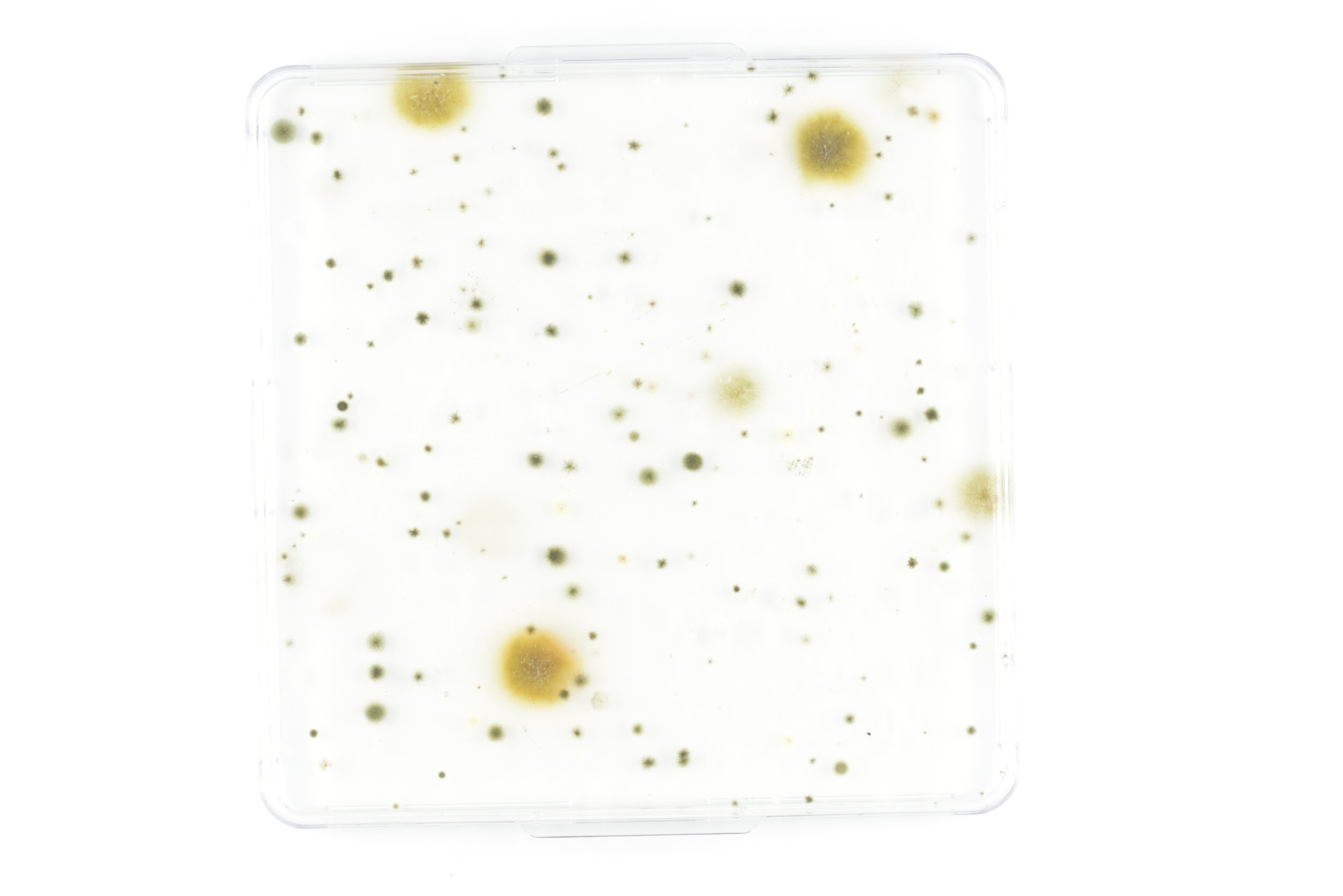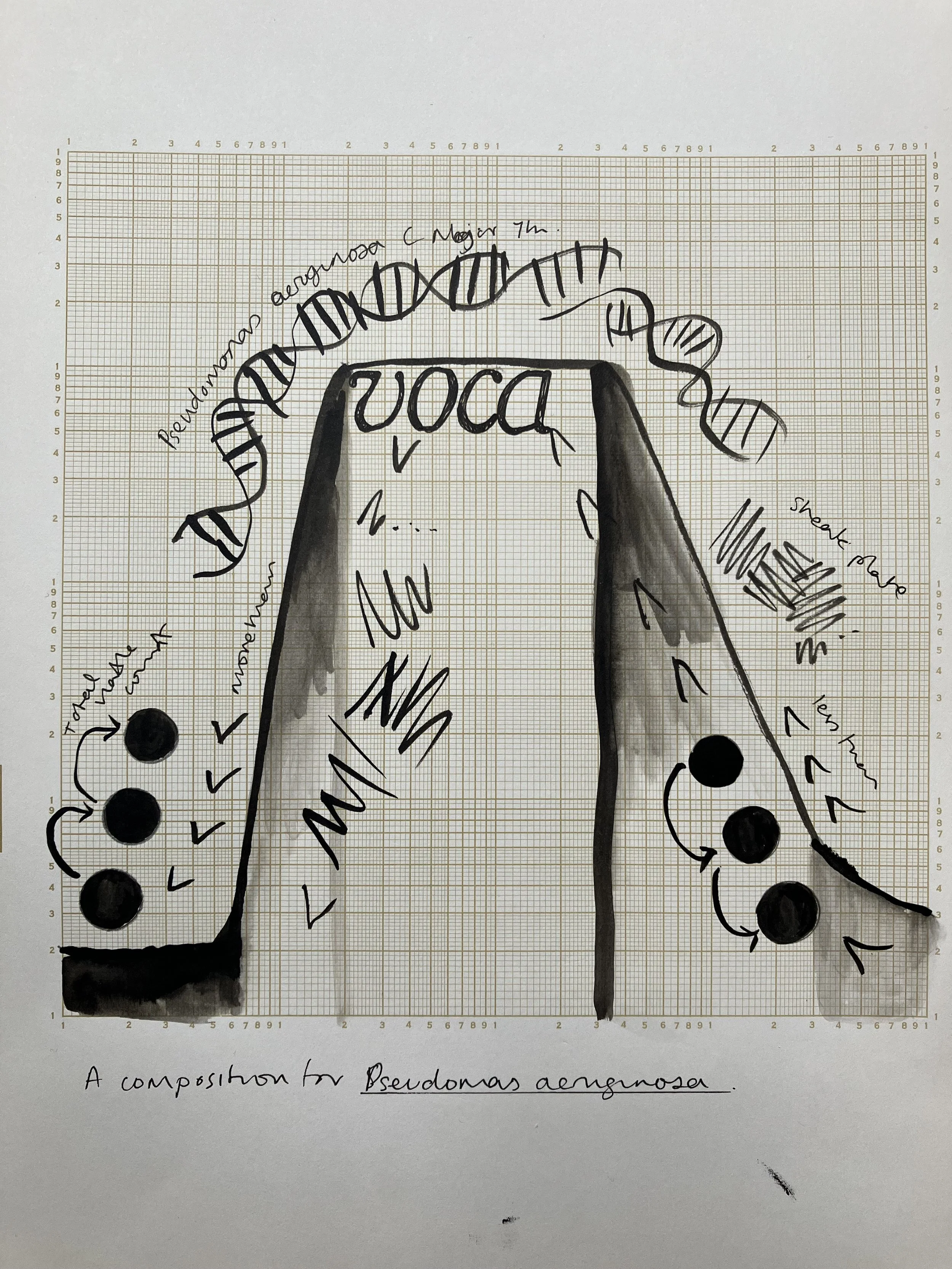
The making of PseudoSonication
In this section, I share the PseudoSonication EP and the journey to its creation. This builds on and includes the learnings and sounds from, The Labophone and LabSounds and Pseudomonas aeruginosa genetic sonication.

PseudoSonication EP
PseudoSonication EP
AI-Generated - PseudoSonication Album Cover
The PseudoSonification EP contains four showcase tracks
Making PseudoSonication
My research found several ideas for start points.
Music has been shown to influence microbial growth: a study, by Kothari (2017) found that Raag Malhar music (Indian classical music) increased microbial growth, in all test species.
Therefore there is a genuine impact and relevance of sound in microbiology. Even when there is no deliberate sounds a laboratory is not a silent place. This gave me the idea of capturing laboratory' white noise' as well as instrumentation. For example the white noise sounds between the various beeps recorded in the laboratory.
I also found a reference to music in Mark Twain's unfinished work "3,000 Years among the Microbes" (1905) The narrator becomes a "cholera germ" and spends time in the microbial world. Microbes are said to "prefer sentimental songs the best" such as "Buffalo Girls won't you come out tonight” by the Pickard Family which is referred to in the story.
However even with these ideas I needed to narrow the potential scope.
Creating Structure
I need a more specific structure and something to limit the length of the songs (when do you stop?) Structuring music to follow the pattern of a microbial growth curve could solve the problem.
Bacteria typically grow in broth in the following stages, known as a bacterial growth curve. Lag phase - low level of replication, Exponential phase - high level of activity and rapid growth, Stationary phase - no new growth and finally, decline and death as all nutrition is and waste products accumulate. I wanted to align the sound activity to these stages and create some John Cage inspired scores (right) to visualise the music. I used petri dish/ Total viable count sounds and streak plate zig zag sounds from the Labophone, building C major 7th chords from the genetic sonification project; during the stationary phase part of the track, I thought this would be a good place to add vocals!
One from the Haiku written about Pseudomonas aeruginosa, which I recorded my daughters reading (Lauren, age 9, features on the E.P).
Adding media samples
I also wanted to include something more unstructured and ambient. I was inspired by using samples from other media sources referencing microbiology. These would be combined with the other inputs already shared, Labophone sounds and Pseudomonas aeruginosa's genetic score.
Initially this was because "Loop" (inoculation loop) and "sample" have meaning in both microbiology and music production! I was using small samples from a film, "The Life of Louis Pasteur" However, after a discussion with researcher Alice Thickett, she shared music from the band Public Broadcasting, which plays alongside and incorporates much longer sections of music. My experiments using different sample sizes are available on SoundCloud, along with critical reflection.

Adding more media: samples from the film “Louis Pasteur, Man of Science” (19)
Graphical score inspired by John Cage “Notations”
Louis Pasteur, Man of Science on YouTube
Building a Track
I looked for something that will enable me to make my own music. The OP-1 from Teenage Engineering is able to record 4 track music and is a combined keyboard and sampler. It's also small and portable useful to take from studio/university/home, easy to use and there are many instruction videos on YouTube, allowing me to learn reasonably quickly. I am also able to connect it directly to the Labophone.
The OP-1 was a good choice, it has limits - you can only record one track at a time and you cannot remix old tracks, but this encourages commitment and once you have recorded it is fixed and you have to move on to the next experiment. Below are two videos of me building a track


